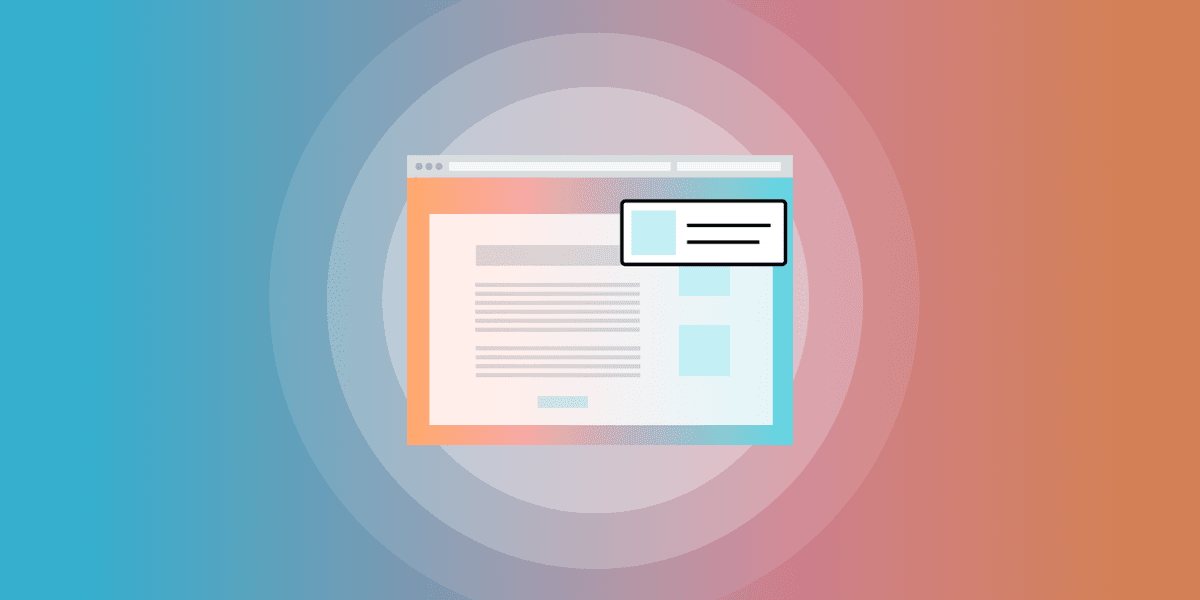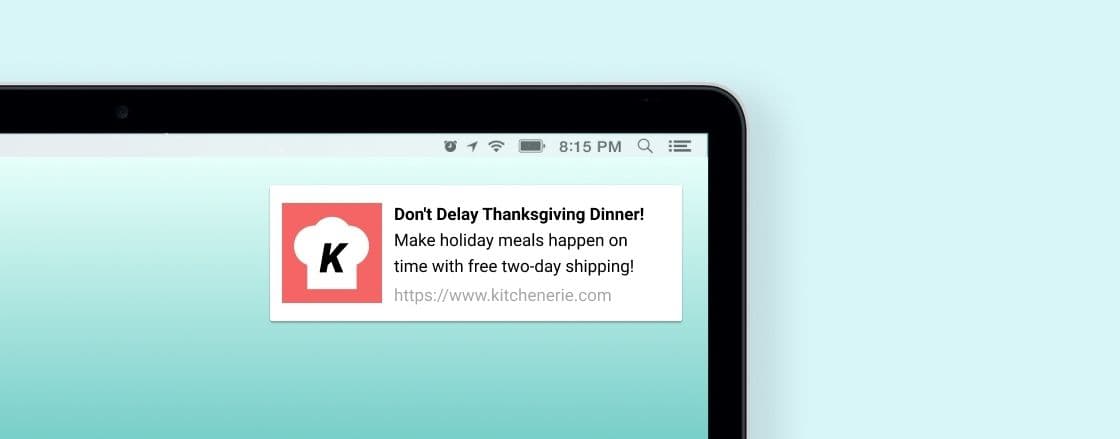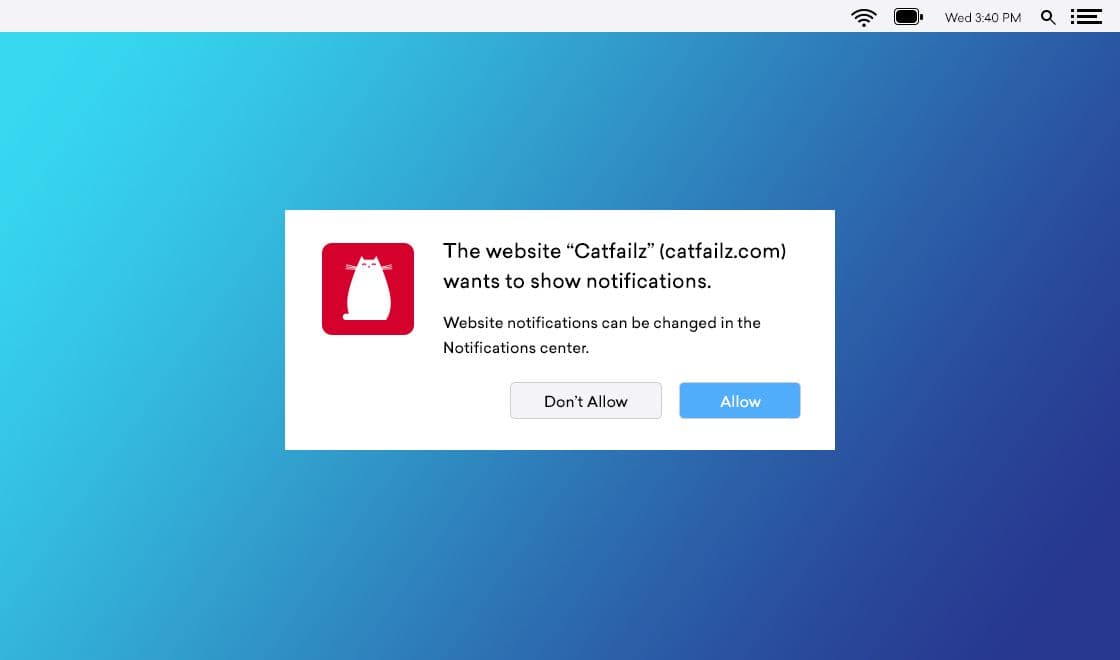What’s Web Push?
Published on April 07, 2020/Last edited on April 07, 2020/5 min read


Team Braze
When a brand wants to grab their mobile app users’ attention, whether or not those users are currently using the app, they know how to do it—they send a push notification. But for too long, there was no equivalent way to reach your company’s web visitors. But over the past five years, the rise of web messaging has changed the dynamic, allowing for direct, eye-catching messages to your web audience for the first time.
What is Web Messaging?
Web messaging is a form of brand-to-customer communication that occurs through desktop web browsers or the mobile web. Web pop-ups have been around for years now and are an early form of web messaging. Today, web messaging comes in two forms—in-browser messages, which target active web visitors, or web push notifications, which can reach users when they’re not actively engaging with your site—and tends to be far more sophisticated in its targeting, customization, and other user experience-focused aspects.
What are Web Push Notifications?
Web push notifications are, in essence, push messages that your customers receive through their web browsers. Available on a wide variety of desktop browsers (and on Chrome for Android on mobile), web push notifications are a new marketing channel that makes it possible for marketers to engage and re-engage their website visitors without having their email address or other traditional contact information.

Any brand can integrate and use web push notifications on their website. The notifications can reach both current and previous web visitors as long as they have a web browser open, but visitors must opt in to receive the notifications—just like with traditional mobile app push.
How Do Web Push Notifications Work?
Web push notifications are simple, especially if you use a platform like Braze. Since web push notifications require an opt-in from the website visitor, there are a few steps to how they work.

In order for a website visitor to receive a web push notification from your brand website, they will receive a small system prompt message asking them to opt-in to receiving more messages from your website. (Though smart marketers tend to use in-browser messages to “prime” users to opt in for web push...) Once the push subscription is confirmed, the visitor’s opt-in status and web push token are saved in the push notification platform. Once someone is opted in, you can use your customer engagement platform (or other web push solution) to build and send a variety of different web push notification campaigns.
How Can Web Push Notifications Benefit Your Customer Engagement Efforts?
At their core, web push notifications are a channel built to share urgent or time-sensitive information with your customers. That means that they aren’t a fit for every situation—if you’re looking to let someone on your website know about a deal, an in-browser message will likely be a better fit—but that they shine when you need to get the word out to your web audience.
Web push can be powerful tools when it comes to driving engagement, boosting revenue, and building relationships without having to invest in outside advertising or other acquisition costs. Users who agree to opt in to web push are signalling that they’re interested in hearing from your brand via the web—but that doesn’t mean they want any old message you feel like sending them. As with any other messaging channels, think seriously about how you can use segmentation and message personalization to provide your web visitors with relevant messages that add real value. Do that, and you can see significant uplift.
Any Examples of What That Might Look Like?
Yes, in fact. Here’s a couple memorable examples:
NASCAR: The National Association for Stock Car Auto Racing—NASCAR—took advantage of web push to keep their audience informed about key news and announcements on the website, as well as driving additional downloads of their mobile app. With the Braze platform’s support for web push, they were able to leverage this channel to see open rates of up to 13.5%.
Anthropologie: Leading clothing and home retailer Anthropologie took advantage of the Braze platform to test and optimize the web push notifications they sent, identifying key learnings in what outreach appealed to their audience on this channel and driving conversions at a rate that was 17.5% higher than average for web push.
How Can I Start Using Web Push Notifications?
The key is ensuring that the customer engagement platform you use can support web push notifications, as well as the targeting, segmentation, and personalization capabilities it takes to send truly impactful messages in this channel. If you have that kind of technology at your disposal, the process of building, testing, and optimizing your web push campaigns should be similar to executing on traditional mobile app push notifications. If not, you’re likely out of luck.
Final Thoughts
If you have a web presence, you need to think seriously about your web messaging strategy to engage, retain, and monetize the web visitors you acquire. For more information on how to take advantage of web push notifications and in-browser messages as part of your marketing strategy, download our Web Messaging: Beyond-the-App Engagement guide today.
Related Tags
Be Absolutely Engaging.™
Sign up for regular updates from Braze.


